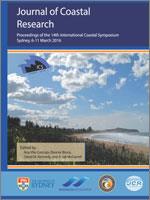Leite, N.R.; Magalhães. A.; Silva, L.M.; Andrade, T. P.; Matos, J. B.; Costa, A. K.;Pereira, L.C.C.; Flores-Montes, M.J., and Costa, R.M.da., 2016. Short and Medium Term Variation in the Dynamics of the Mesozooplankton Community of an Amazonian Estuary. In: Vila-Concejo, A.; Bruce, E.; Kennedy, D.M., and McCarroll, R.J. (eds.), Proceedings of the 14th International Coastal Symposium (Sydney, Australia). Journal of Coastal Research, Special Issue, No. 75, pp. 218–222. Coconut Creek (Florida), ISSN 0749-0208.
The aim of this study was to investigate the short- and medium-term variation in the dynamics of the zooplankton community, in a macrotidal estuary (the Taperaçu) of the Amazon Coast of northern Brazil. This estuary has a characteristic funnel shape, with extensive sandbars running down the middle and current patterns typical of a shallow estuary, in addition to substantial seasonal variation. Fluctuations in zooplankton densities were analyzed in the context of the influence of the tidal cycle, temperature, salinity, turbidity, pH, dissolved oxygen concentration and chlorophyll-a concentrations. Data were collected in months of June, September and December 2012 and March, June, and September/2013. Samples were taken at three fixed stations, S1, S2, and S3 at 3-hour intervals over a nychthemeral cycle during the neap tide. The data were analyzed using a two-way ANOVA (to test the significance of the variation among stations, months, tides, and the circadian cycle) and PCA. Five principal species were identified–A. tonsa, A. lilljerborgii, P. marshi, P. quasimodo, O. oswaldocruzi and O.dioica. The results indicate that the patterns of variation (temporal, tidal, and spatial) in the zooplankton of the Taperaçu estuary were determined primarily by precipitation, salinity, turbidity, and chlorophyll-a concentrations, due to the strong local hydrodynamics and the unique morphodynamic characteristics of the estuary that provoke the constant mixing of its waters.





